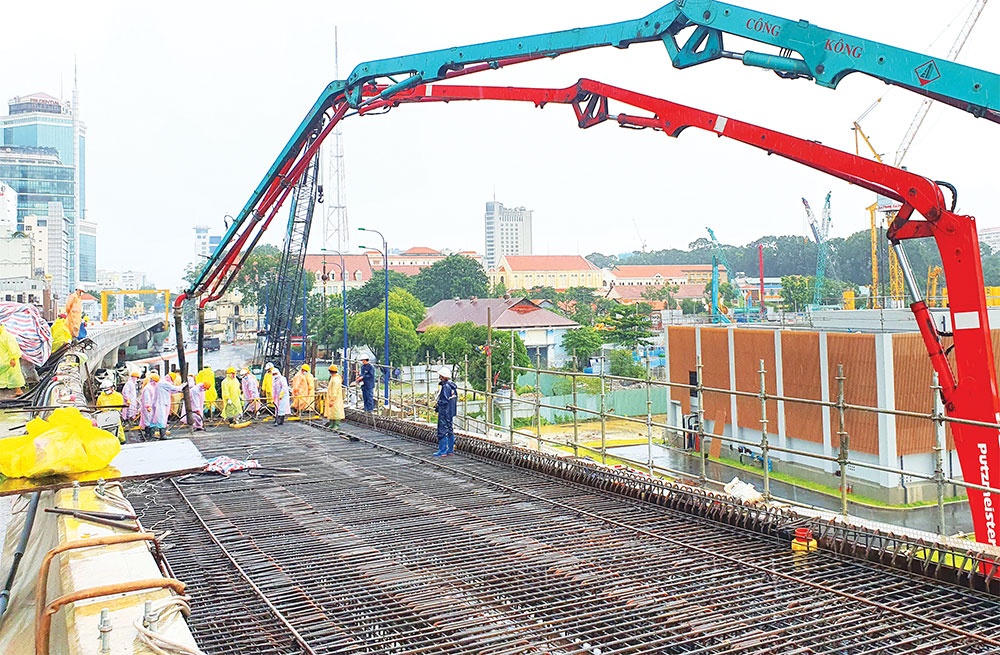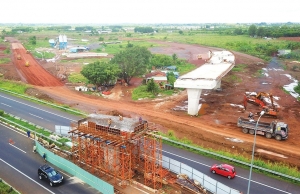Vietnamese exports await offset from crucial public investment activities
Short-term efforts last month to remove the main obstacles to constructing part of Hanoi’s second metro line, which focuses on the tunnel and underground stations, has not changed the disbursement results of the Hanoi Urban Railway Management Board.
 |
| Vietnamese exports await offset from crucial public investment activities - illustration photo |
The board is one of the units with large capital but a low disbursement rate in Hanoi. By the end of September, only 18.5 per cent of its planned capital had been disbursed.
The total investment capital of this project after adjustment was around $1.17 million, of which, official development assistance loans are nearly $960 million and domestic about $218 million.
Vietnam’s capital is competing with all other localities in attempting to speed up disbursement progress of public capital in the last months of the year.
According to the Ministry of Finance, in 2022 the total public investment capital will be about $24.3 billion, about $4.2 billion larger than in 2021. By the end of September, the disbursement of public investment will increase, reaching over $10.6 billion. However, the new rate reached merely 46.7 per cent of the plan assigned by the prime minister, 0.7 per cent lower than in the same period 2021.
Vietnam’s economy gradually recovered but exports showed signs of slowing down. Data released by the General Statistics Office on September 29 showed that in the third quarter, Vietnam’s export turnover was estimated at $96.5 billion, up 17.2 per cent over the same period last year but down 0.5 per cent compared to the second quarter of 2022.
Andrew Jeffries, country director for Vietnam at the ADB at a press conference on September 21, said that the government’s drastic push to disburse public investment – including the implementation of the programme on economic recovery and development – will offset the decrease in exports due to the weakening effect of demand on the world market.
“However, this level of offset depends greatly on the current slow disbursement progress,” Jeffries said.
The ADB’s latest report also leads to concerns that Vietnam’s economy will continue to face increasing risks in the last months of the year, while the global economic downturn may affect exports.
Food shortages and the recovery of the global food supply chain are expected to boost agricultural production this year. However, high input costs will likely still hold back the recovery of the agricultural sector.
Efforts to keep the exchange rate stable to support imports and exports can also put pressure on foreign exchange reserves. The devaluation of the VND makes imports more expensive than exports, which will lead to a trade deficit in 2022.
The current account is forecast to have a deficit of 1.5 per cent of GDP this year.
In addition, the labour shortage is expected to impact the rapid recovery of labour-intensive export manufacturing and service industries in 2022.
 | Localities innovating to boost public funding disbursement The decentralisation of government spending will contribute to speeding up public investment disbursement, according to the Ministry of Planning and Investment. |
 | Public investment hits forward motion Overcoming a number of socioeconomic difficulties, local public spending disbursement has been accelerating nationwide to ensure goals are reached. |
What the stars mean:
★ Poor ★ ★ Promising ★★★ Good ★★★★ Very good ★★★★★ Exceptional
Related Contents
Latest News
More News
- Businesses ramp up production as year-end orders surge (December 30, 2025 | 10:05)
- Vietjet chairwoman awarded Labour Hero title (December 29, 2025 | 13:06)
- How to unlock ESG value through green innovation (December 29, 2025 | 10:03)
- AI reshapes media and advertising industry (December 29, 2025 | 08:33)
- FPT and GELEX sign deal to develop blockchain tech for global markets (December 29, 2025 | 08:29)
- Vietnam’s GDP forecast to grow by 9 per cent in 2026 (December 29, 2025 | 08:29)
- Women entrepreneurs are key to Vietnam’s economic growth (December 29, 2025 | 08:00)
- Vietnam's top 500 value-creating enterprises announced (December 27, 2025 | 08:00)
- The PAN Group shaping a better future with ESG strategy (December 26, 2025 | 09:00)
- Masan Consumer officially lists on HSX, marking the next phase of value creation (December 25, 2025 | 13:20)

 Tag:
Tag:




















 Mobile Version
Mobile Version